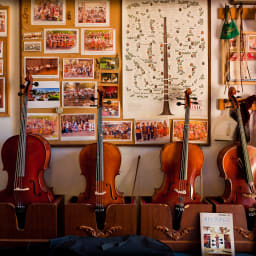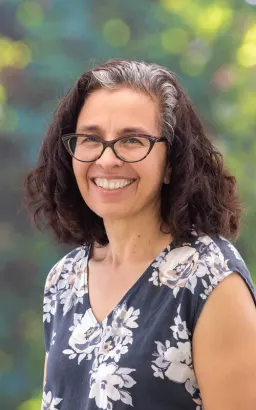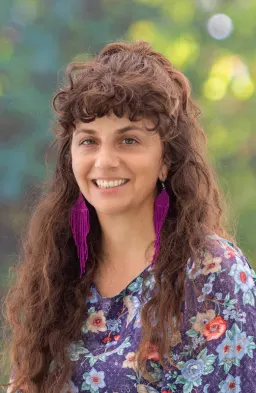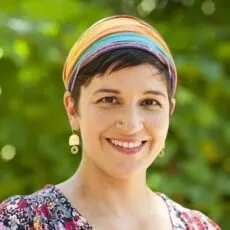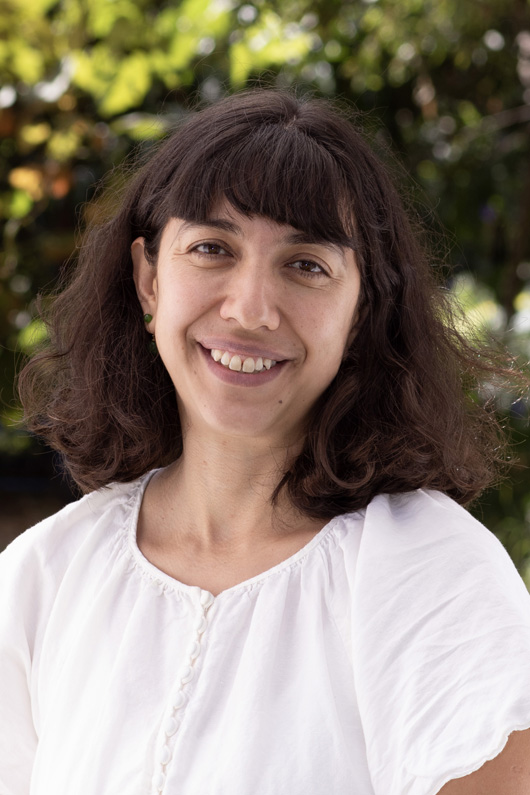Grades
a rich, dynamic, and varied education
In the grades classes, each student's day is filled with different experiences and activities that encourage engagement and development of the “head, heart and hands.”
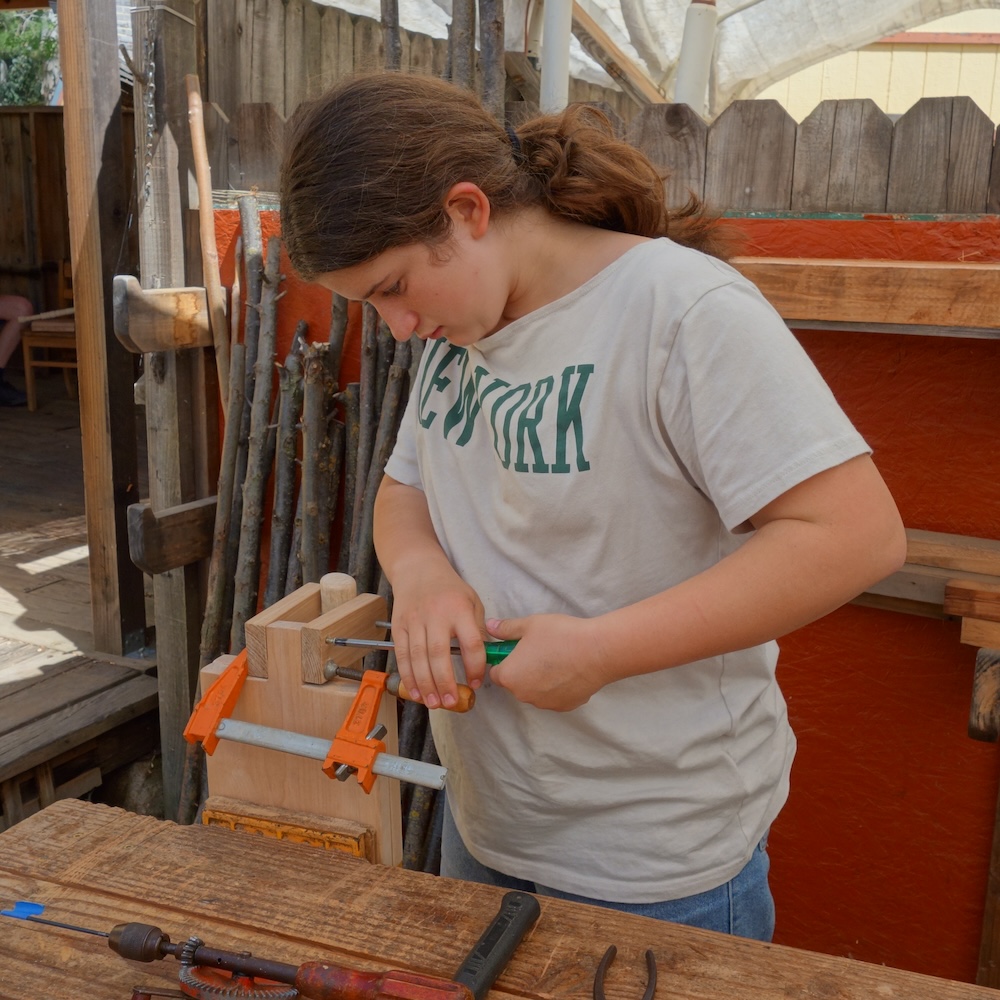
“
The need for imagination, a sense of truth, and a feeling of responsibility; these are the very nerve of education.
Rudolf Steiner

Head, Hands, and Heart
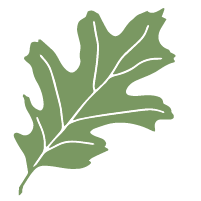
Waldorf educators have always recognized a child learns best when their whole being – body, emotions and intellect – is actively involved in the learning process. In the grades, each day begins with a two hour main lesson period, an in-depth exploration of a core academic subject designed to engage the full range of the child’s capacities. Main lesson typically includes some movement, speech and/or drama activity, music, and often an opportunity to interact and work with peers before transitioning into focused work time. In Waldorf education, the curriculum is delivered in “block” form, where a subject, such as fractions, Roman history, or cultural geography, is explored in depth for three to four weeks at time each morning during main lesson.
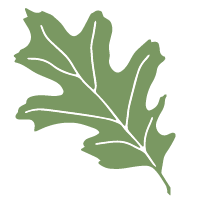
Multi-Sensory Approach
During work time, the teacher guides their students through a rhythm of “review, do, new.” This includes deeply reviewing and recalling previously discussed material; illustrating, writing, and solidifying their understanding during work time; and learning new material to further their knowledge of the subject at hand. Teaching methods evolve to meet the developmental stage of the class, and academic rigor and expectations continuously increase, especially as children enter the middle grades. No matter the grade, the imaginative, multi-sensory approach of Waldorf education enlivens learning for the children and allows them to become active and enthusiastic participants in their own educational journey.


The Class Teacher

The Class Teacher is an integral figure in a child’s educational journey at a Waldorf School. The Class Teacher works directly with parents, subject teachers, and other colleagues to build a well-rounded, supportive and academically rich experience. Ideally, Class Teachers carry a class for several years, and typically stay with a class for part or all of the journey from grade one through eight. Class Teachers come to know their students well and work creatively to bring the curriculum in a way that meets the needs of their class, accommodating individual learning styles as needed. The Class Teacher works in close partnership with parents to ensure the best possible experience for each child. The warm sense of community that characterizes the Waldorf class provides a secure environment for learning; each child’s gifts are recognized as a unique and valuable contribution to their class, school, and greater community.

Subject Classes
After Main Lesson in the morning, the children have special subject classes. These vary from grade to grade, and allow children to work with their hands, engage with music and instruments, and deepen their understanding of mathematics, nature, and movement. Our subject classes include Handwork, Woodwork, Strings, Music, Middle School Mathematics, Gardening, Movement, and Spanish. Each subject class is taught by an experienced teacher one or more times a week, and each class brings variety and exciting challenges to the students’ school day. Along with subject classes, each grade has a number of “practice periods” during the week, which the class teacher uses to deepen skills in language arts, math, and art, direct a yearly play drama, and do special, grade-specific activities. Click here to learn more about our subject classes and their curriculum.

Grades Teachers

Grades Curriculum Overview
Below is a general overview of our grades curriculum. For a grade specific, more in-depth description of our curriculum, please visit our Lower School or Middle School pages.
Science Curriculum
Scientific studies are incorporated into Waldorf education throughout the grades. The curriculum strives to inspire respect, appreciation, and a deep understanding and knowledge of the universe and its many phenomena. In the lower grades, (1st – 5th), students engage with the natural world in a growing capacity, both with in-class curriculum activities and hands-on experiences in subject classes. From the seasons, to natural fibers, to the study of the honeybee, the lower grades science curriculum incorporates various areas of study that lead into the upper grades curriculum. As students grow older and enter middle school (6th – 8th), the science curriculum is brought with diligent focus and structure. Students use their observational skills to explore a myriad of scientific subjects, including organic and inorganic chemistry, physics, geology, and physiology to name a few!
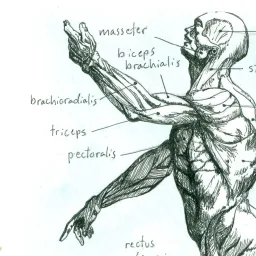
Mathematics Curriculum
The study of mathematics is a keystone principle of Waldorf education, and builds upon itself throughout the grades in a purposeful, multi-faceted way. At Davis Waldorf School, class teachers carry the math curriculum from 1st through 5th grade, and in middle school, students begin to work with a specialized math teacher to deepen their skills and exploration of the subject. No matter the grade, teachers work to support students of all levels of skill, and individual learning styles are supported through the varied and dynamic ways the curriculum is delivered to the class. The rich curriculum of Waldorf mathematics includes explorative and observational activities and lessons, and movement, songs, poems, writing, and rigorous practical application of skills is woven throughout the curriculum continuously.

Language Arts Curriculum
Language Arts is studied rigorously from first through eighth grade, and is done so by incorporating literature, speech, composition, and practical grammar and spelling skills into the main lesson curriculum. Teachers bring stories rich in imagery, high-level vocabulary, and complex sentence structure into daily stories, and practical skills and concepts are studied regularly through engaging and lively methods. As the grades progress, students experience language arts through poetry, plays, and with structured and creative writing pieces. Classes are assigned class readers throughout the school year, and teachers carefully choose books that uphold the themes and curriculum of the grade and the class’s development.
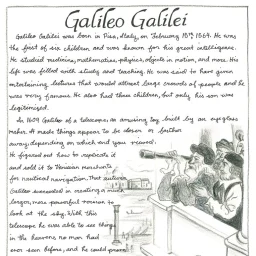
Social Studies Curriculum
Social Studies, including history and geography, are woven together throughout the grades curriculum. World history topics, cultural geography studies, mathematics, and other main lesson blocks are presented to the students in lively and interactive ways. Each grade has its own areas of concentrated study, and topics included are carefully included and presented to support the children in their development and growing social life. No matter the subject of study at hand, language arts is a constant theme throughout. Waldorf Education strives to inspire a love of language, the written word, and oration through its grades curriculum.
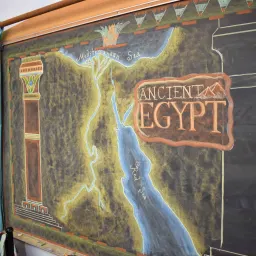
Arts Curriculum
The Arts imbue every aspect of the Waldorf curriculum to deepen and enliven the experience and development of the child. Artistic mediums vary depending on the grade, and activities are carefully selected by the teacher so that they may be developmentally appropriate and enriching for their particular group of students. In main lesson, students work with their class teacher to create main lesson books, which are their individual, creative representations of the curriculum presented in class. In these books, beauty and care are emphasized, and pieces could include precise grid maps, carefully shaded geometric forms, poetic pieces written with cursive handwriting, and vibrantly drawn illustrations. In the early grades, children create their main lesson books with the close guidance of their teacher, and as they grow older, students have the opportunity to show their individual styles, and generate nearly all of the material themselves.
Other artistic mediums in the grades include: watercolor painting, sculpting with clay, drawing with crayon, charcoal or colored pencils, as well as yearly dramatic plays performed by each grade. Subject classes are also deeply artistic and tactile, and students have the opportunity to work with their hands in subjects such as Handwork, Woodwork, and even Mathematics! As always, any artistic activity woven into the daily curriculum is connected to the children’s place in their development, and teachers work carefully to choose the most fitting activity for their class.
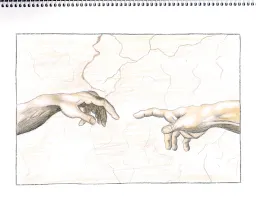
Music Curriculum
Music is interwoven throughout the school day as well. Younger children sing in unison and in rounds, and learn to play pentatonic or diatonic flutes during main lesson, while often learning basic musical notation and music theory. As children grow older, they learn to sing in multi-part harmony, and learn to play soprano, alto, or baritone recorder. The teacher’s song choices are inspired by the grade’s curriculum, which deepens one’s connection to the subject being studied in main lesson.
Our Strings program begins in fourth grade, and students have the choice to learn the violin, viola or cello. Students learn to read music and engage with musical pieces from various cultures and eras. The community enjoys a musical performance by the strings and music programs at our yearly spring concert.
